Research into the almost forgotten Belgian car brand Imperia inevitably led the author of these lines to two privately run Belgian car museums, namely Autoworld Brussels and the Mahymobiles Museum in Leuze-en-Hainaut. Both are inextricably linked with the name Ghislain Mahy (1907 to 1999) and his family.
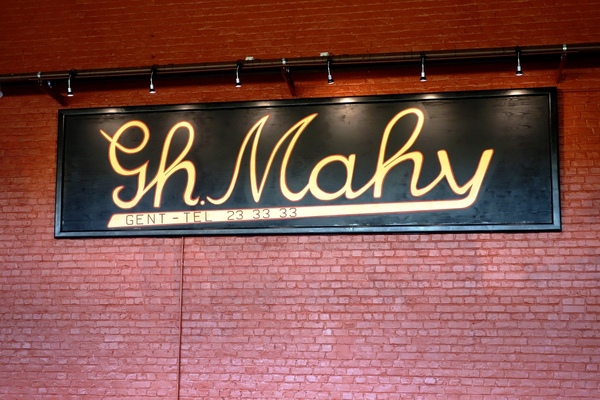
The Belgian car dealer Ghislain Mahy
Since not everyone will probably recognize this name, we will first introduce this personality. Ghislain Mahy was a Belgian car dealer who later also ran a car rental business. In 1944, he began collecting vehicles, which he initially restored himself and later together with friends.
The ever-growing collection
Soon he was no different to other collectors: he urgently needed space for his vehicles, especially as the collection had grown to around 950 vehicles! In the course of time, several relocations became necessary.
After the Mahy collection was transferred to a foundation in 1970, the first Belgian car museum was opened in Houthalen.
However, when the landlord there wanted to quintuple the rent, it was again necessary to look for a place to house the huge Mahy collection. This meant dividing it up.
Division into two museums
The first part started as "Autoworld Brussels" in a time-honored hall made of glass and iron in the middle of the Belgian capital. This hall was built to celebrate the fiftieth anniversary of the founding of Belgium in 1880 and is located in the so-called Jubelpark (Parc du Ciquantenaire) in the immediate vicinity of a triumphal arch. It was certainly a good choice, as the Brussels Motor Show had already been held here for several decades.

Now 8000 square meters are available here for more than 300 vehicles from the collection.
After the property of a former textile factory in Leuze-en-Hainaut was also acquired, the "Mahymobiles" museum was opened there in 2000 with further vehicles from the Mahy collection. In Leuze, 300 vehicles are exhibited on 6000 square meters; three additional "halls" were opened there in 2005. As both museums emerged from one collection, they will be described together here, even if they differ considerably from each other.
Beyond the usual
Let's begin our foray into the classic car world of Ghislain Mahy at Autoworld Brussels. Although the author visited the museum on a Sunday, Autoworld was not overcrowded, so it was possible to view the exhibits at leisure.
The vehicles are presented rather traditionally in the two-storey, spacious hall with the appropriate decorations.
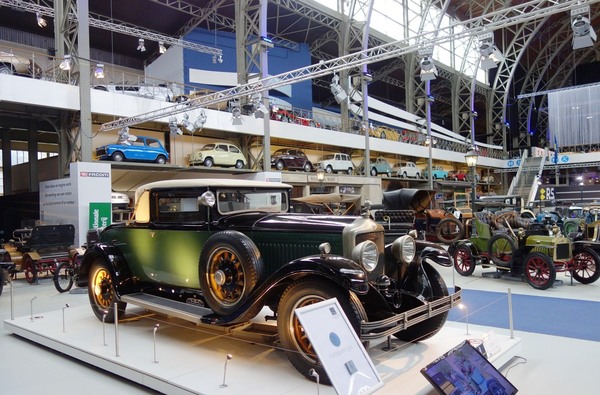
Audio guides are available, but there is no excessive use of media. Vehicles are on display in very different states of preservation, ranging from carriages - there is even a separate room for them - to vehicles from the 1990s.
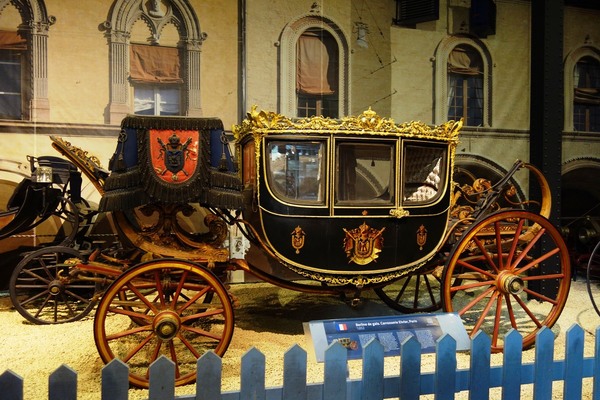
These vehicles - motorcycles, cars and also some trucks - are organized by country, time period or theme and accompanied by brief English-language information.
In particular, visitors can expect to see a truly astonishing number of cars from the brass era.
Although American brands or Benz, Opel and Wanderer are also shown, it is nevertheless astonishing from today's perspective how many car brands there once were in the French-speaking world beyond Peugeot, Renault, Citroën and Panhard Levassor: De Dion Bouton, Chenard Walcker, Le Zèbre and Sizaire-Naudin are just a few examples.
Even luxury brands and exotic cars
Very classy vehicles are also on display at Autoworld: Rolls-Royce, Daimler and Horch can be found alongside Delage, Bugatti and Voisin.
The presentation of Belgian automotive history, which not only includes exhibits from Minerva, FN and Nagant, but is also explained in four languages in a separate room, is very commendable.
You will also find what you are looking for with regard to the special search mentioned at the beginning: Two Imperia and a late Standard Vanguard license build from 1949 are on display.
Belgian automobile history naturally also includes Camille Jenatzy, who was the first to break the 100 km/h barrier with a road vehicle in 1899 with his cigar-shaped, electrically powered vehicle "La Jamais Contente". A replica of this car is on display.
Cars belonging to the Belgian royal family are also on display. Directly opposite: a Peugeot 403, although its proximity to a Borgward Isabella Coupé in gold metallic was not entirely obvious.
On the upper floor, there are some real rarities alongside more recent exhibits. For example, a J.P.W. prototype from 1946, which goes back to the French racing driver Jean-Pierre Wimille (1908-1949) - perhaps known to some as a driver for the Bugatti works team, among other things.
In the vicinity of a Cord "Coffin Nose" limousine, a small Moretti 750 Berlinetta and a beautiful, patinated Delage D8 convertible stands a strange one-off: the Bugatti T 57 by French/British artist Jacques (James) Brown, which was also on display at the first Interclassics Brussels 2015.
In 1952, Brown placed a plastic body on the chassis of a 1938 Bugatti T 57 and thus created an automobile that was quite polarizing due to its unusual design language.
For comic fans
On the same floor there is also a room, probably intended more for families and younger visitors, which is dedicated to the comic figure of the fictional racing driver Michel Vaillant, who is particularly popular in French-speaking countries.
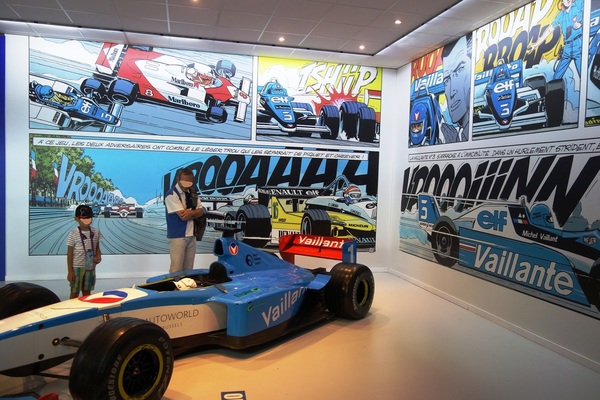
The second floor is also regularly used for special exhibitions. At the time of my visit, there was a very informative exhibition on the occasion of Renault's 120th anniversary. Autoworld also has a small movie theater, a restaurant and a well-stocked museum store. So a visit is definitely worthwhile for anyone who appreciates the rarity of the exhibits.
More than a museum
"More than a museum" is what Autoworld Brussels aims to be. This description would perhaps apply even more to the Mahymobiles Museum, which houses the other part of the collection of Ghislain Mahy and his descendants.
It is located in the countryside on the western edge of Wallonia. More precisely: just before the French border in the small town of Leuze-en-Hainaut.
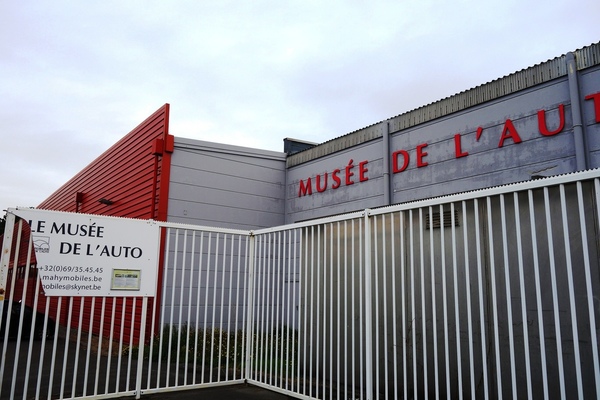
To the onlooker, it seems that only die-hard fans of rolling cultural heritage will find their way here. And the museum is certainly not for everyone. At least not for those contemporaries who expect glossy cars accompanied by ultra-modern media magic and believe they have seen everything in an hour.
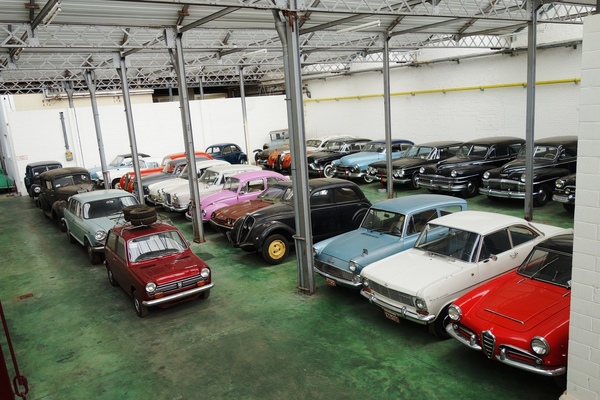
Mahymobiles is completely different from other museums, and also different from the previously presented Autoworld Brussels. But that is precisely what should make it so appealing to lovers of rusty sheet metal, whereby the latter can be taken quite literally. However, you should make sure you check the opening times beforehand, as the museum is unfortunately only open for a limited period of time. And another tip: Leuze is bilingual - but if you understand Dutch or French, you have an advantage!
Enormous range
The museum can be divided into two parts. After an introduction with small cars - such as the rare electric Zagato Zele from 1975 - you reach the "Mahy Hall" in the first section. Here, the vehicles are on permanent display, just like in Brussels. Small signs explain the exhibits in French, Dutch and English, although they didn't seem to be quite as well organized as in Autoworld.
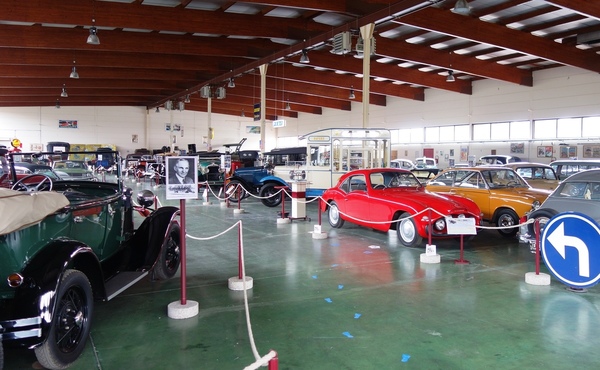
However, the range is astonishing. It ranges from the younger, less spectacular cars such as the Triumph Stag and Spitfire, Porsche 914 or Ford Taunus 20m TS to a Jensen Interceptor or a motorcycle from Royal Enfield, right up to the rarely shown Fiat 2100 saloon from 1960 or the AWZ Zwickau P 70 estate. The unique coupé by De Mola (1961), known as the Volvo, based on a 1934 Lancia, is also remarkable.
There are also many pre-war cars in this hall. In addition to a Schwimmwagen, a Mercedes 130 H, Maybach SW 38 (1937) and Horch 780 Cabrio from 1934 should be mentioned here.
Unfortunately, not all cars are still available
Of course, there are also a number of Belgian vehicles here, although at the time of the visit there was only one Imperia left, namely a TA 9 convertible from 1938. This was due to the fact that 130 of the museum's cars - including another Imperia - were auctioned off in the summer of 2018 (the list of the museum's inventory that can still be found online is therefore no longer up to date).
Like a barn find
The second part of the museum, which can be reached via a gallery, presents itself to the visitor in a completely surprising way. It's like being led along a treetop path through a gigantic barn find. The only difference is that there is no biosphere reserve at your feet, but rather a lot of unrestored vintage cars. Even wrecks. This is why you should say goodbye to the idea that Mahymobile vehicles are displayed and systematically presented in "showroom condition".
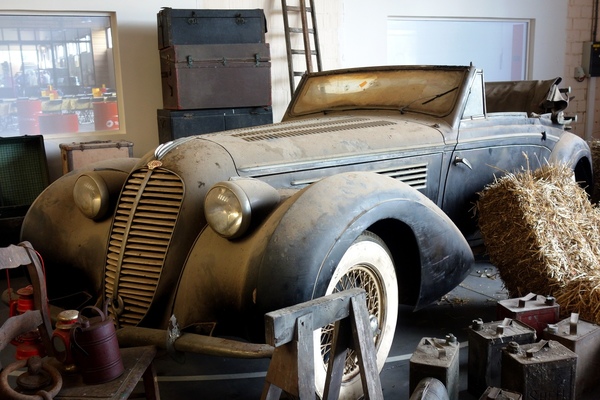
Visitors are then also informed of the museum operators' alternatives: they could either restore the collection over 100 years and several generations or show the cars as they came into the collection - i.e. "dans leur jus". The latter option was chosen.
Hubcaps and "natural" cars
First of all, you pass by adjoining rooms with, among other things, a hubcap collection into a large hall. In addition to a number of Americans, there is a Delage D8 100 (1939), a Talbot Lago from 1947, a Peugeot 203 (1952) and a Ford Cortina convertible from Crawford. Most of the vehicles are completely "natural". But then it gets dark.

In terms of atmosphere, this part of the museum was somewhat reminiscent of the staging of the Baillon collection a few years ago at the Rétromobile in Paris. Except that here the presentation is not in an artificially arranged semi-darkness. In this part of the museum, the vehicles on display are only briefly described. As you walk past two Citroën P 17 Kégresse half-track vehicles, your gaze falls on a huge platform in the middle of the hall.
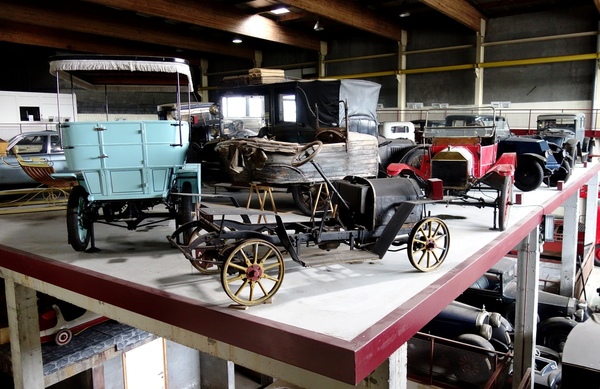
On it is a remarkable collection of cars, which the visitor circles on his way. The development of car body construction is presented in small steps: The examples range from the coach to the Ro 80(!). And what else there is to discover on the platform and below ...
But as we all know, everyone only sees what they want to see. So here are just a few comments from the author: There is a 1955 Chrysler Ghia to be discovered - not in the same condition as it has been seen recently at beauty contests, of course. A Maserati A6G 2000GT Allemano from 1954 appears to have been parked more casually and in the immediate vicinity of a Glas Isar 600 ("large Goggomobil") was a stately, completely unrestored 1948 Delahaye 135 M with bodywork by Vanden Plas.
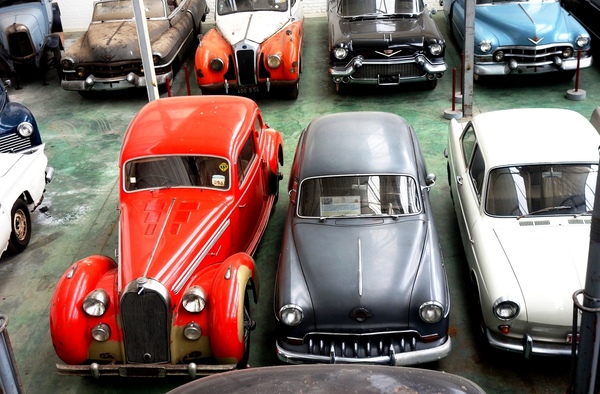
There is certainly much more to discover here, especially as far as pre-war vehicles are concerned. In addition, there are other vehicles not on display in a reserve collection. The museum in Leuze has a small store, a mini-track for young visitors and a cafeteria.
So if you take your time and visit both museums, you can immerse yourself in the history of the automobile - and not just that of Belgium. It's well worth it!
Further information on Autoworld Brussels and the Mahymobiles Museum can be found on the websites of both institutions.
The admission prices of EUR 10 and EUR 8 (before concessions) are more than fair.




























































































































































































